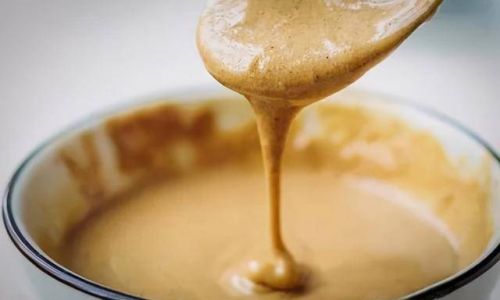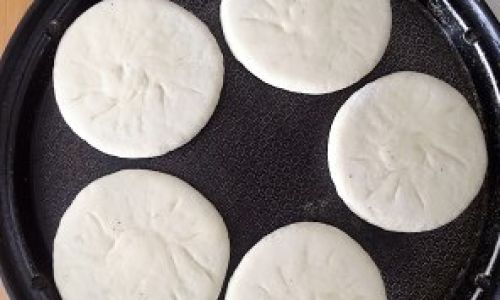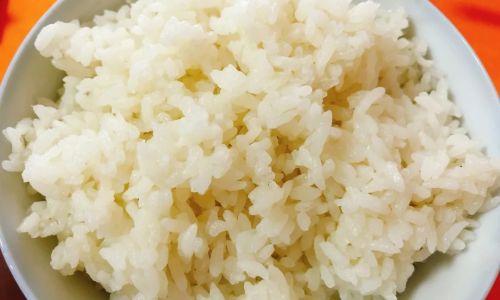Introduction
Sesame salt, a blend of toasted sesame seeds and salt, is a staple in many cuisines worldwide. Its nutty aroma and rich flavor enhance dishes from simple salads to complex stir-fries. However, achieving the perfect balance of toasted sesame seeds—neither too raw nor overly burnt—can be challenging. This guide aims to provide a comprehensive understanding of how to determine if sesame salt is properly cooked, ensuring you can enjoy its optimal taste and texture in every meal.

Understanding the Components: Sesame Seeds and Salt
Before diving into the cooking process, it’s crucial to understand the two main components of sesame salt: sesame seeds and salt.
Sesame Seeds:
Sesame seeds are tiny, oil-rich seeds that come in various colors, including white, black, and brown. They are highly nutritious, packed with healthy fats, proteins, fiber, and essential minerals like calcium and magnesium. When toasted, sesame seeds undergo a transformation, releasing their natural oils and developing a nutty, aromatic flavor.
Salt:
Salt, primarily sodium chloride, is a vital seasoning that enhances flavor and preserves food. In sesame salt, it acts as a balancer, highlighting the nutty taste of the sesame seeds without overpowering them. The type of salt used can vary—from table salt to sea salt—but the key is to ensure it complements the sesame seeds without masking their natural essence.
The Importance of Proper Cooking
Toasting sesame seeds is an art form that requires patience and attention to detail. Undercooked seeds lack the desired aroma and flavor, while overcooked ones can become bitter and acrid. Proper cooking not only enhances the taste but also ensures the sesame seeds retain their nutritional benefits.
Preparation Before Cooking
Before you start cooking, there are a few preparation steps to follow:
-
Selection of Seeds: Choose fresh, whole sesame seeds. Avoid seeds that look discolored, cracked, or have an off odor.
-
Cleaning: Rinse the sesame seeds under cold water to remove any dust or impurities. Pat them dry using a clean kitchen towel or paper towels.
-
Mixing with Salt: Decide on the salt-to-sesame seed ratio. A common ratio is 1 part salt to 4 parts sesame seeds, but this can be adjusted to taste. Mix the seeds and salt evenly to ensure an even distribution during toasting.

The Cooking Process
There are several methods to cook sesame salt, each yielding slightly different results. The most common methods include stovetop toasting, oven toasting, and microwave toasting. Here, we’ll explore each method in detail, focusing on how to determine doneness.
Stovetop Toasting
Stovetop toasting is a quick and direct method that requires constant vigilance to prevent burning.
Steps:
- Place a dry, heavy-bottomed skillet or frying pan over medium-low heat.
- Add the sesame seed and salt mixture, spreading it out in a single layer.
- Toast, stirring frequently with a wooden spoon or spatula to ensure even cooking.
Determining Doneness:
- Aroma: The first sign of doneness is the release of a nutty, fragrant aroma. This usually occurs within 3-5 minutes of toasting.
- Color: As the seeds toast, they will turn a light golden brown. Be cautious not to let them darken too much, as this indicates overcooking.
- Sound: When the seeds are nearly done, you may hear a faint popping sound. This is the oil inside the seeds expanding and releasing.
- Touch Test: Remove a small handful of seeds and let them cool slightly. Taste one. It should be slightly crunchy with a robust nutty flavor. If it tastes raw or has a hint of bitterness, continue toasting for another minute, stirring constantly.
Oven Toasting
Oven toasting is a more hands-off approach, suitable for those who prefer a slower, more controlled cooking environment.
Steps:
- Preheat your oven to 325°F (165°C).
- Spread the sesame seed and salt mixture in a single layer on a baking sheet.
- Place in the preheated oven and toast for about 5-7 minutes, stirring halfway through.
Determining Doneness:
- Aroma and Color: Similar to stovetop toasting, monitor the aroma and color closely. The seeds should develop a golden hue and a nutty smell.
- Consistency: Oven-toasted seeds may take slightly longer to reach peak flavor due to the more consistent heat distribution. Check every 2 minutes after the halfway point to avoid overcooking.
- Touch and Taste Test: Once the seeds are golden brown, remove them from the oven and let them cool. Perform the touch and taste test as described above.
Microwave Toasting

Microwave toasting is the fastest method but requires the most precision to avoid burning.
Steps:
- Spread the sesame seed and salt mixture in a single layer on a microwave-safe plate.
- Microwave on high for 1-2 minutes, stirring after each minute.
Determining Doneness:
- Close Monitoring: Due to the rapid heating of microwaves, it’s crucial to check the seeds frequently. Overcooking can happen in seconds.
- Aroma and Color: As soon as you detect a nutty aroma and the seeds start to turn golden, stop the microwave immediately.
- Cool and Taste: Allow the seeds to cool slightly before tasting. They should be evenly toasted and flavorful.
Post-Cooking Considerations
Once your sesame salt is properly cooked, there are a few additional steps to ensure it stays fresh and flavorful.
Storage:
- Store the sesame salt in an airtight container in a cool, dark place. This prevents moisture and air from degrading the flavor.
- For long-term storage, consider refrigerating or freezing the sesame salt to retain its freshness.
Using Your Sesame Salt:
- Sesame salt is versatile and can be used in various dishes. Sprinkle it over salads, grilled vegetables, noodles, or use it as a seasoning for meats and seafood.
- Experiment with different salt types and ratios to find your perfect flavor profile.
Troubleshooting Common Issues
- Bitter Taste: If your sesame salt tastes bitter, it’s likely overcooked. Next time, reduce the cooking time and stir more frequently.
- Lack of Aroma: If the sesame salt lacks aroma, it may be undercooked. Increase the cooking time slightly and ensure even heat distribution.
- Clumping: If the sesame salt clumps, it may have absorbed moisture. Store it in a drier environment or add a small amount of rice flour to absorb excess moisture.
Conclusion
Mastering the art of cooking sesame salt is a rewarding culinary endeavor that enhances the taste of countless dishes. By understanding the components, preparing properly, and carefully monitoring the cooking process, you can achieve perfectly toasted sesame seeds that balance flavor, aroma, and texture. Whether you prefer stovetop, oven, or microwave toasting, the key to success lies in vigilance, patience, and a willingness to experiment until you find your perfect sesame salt recipe. Enjoy the nutty, aromatic journey of creating your own homemade sesame salt!






0 comments